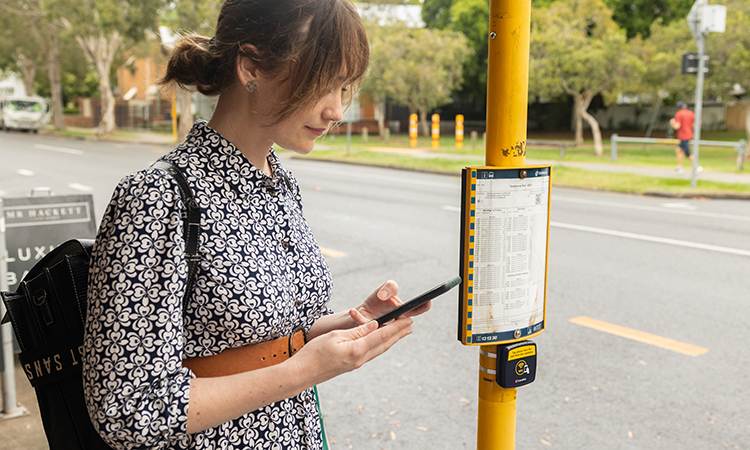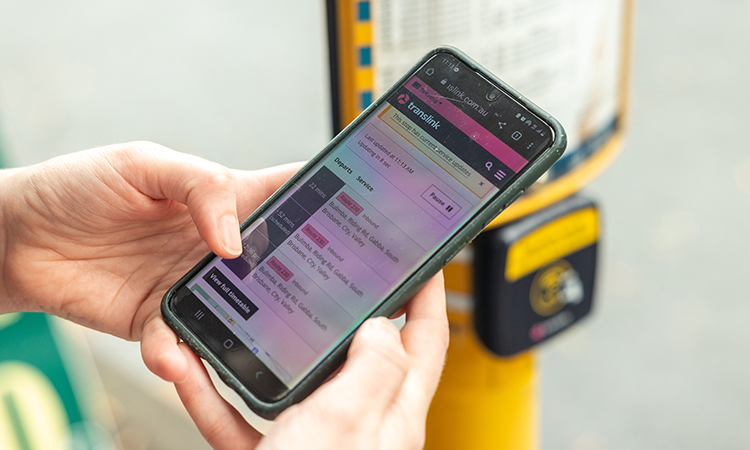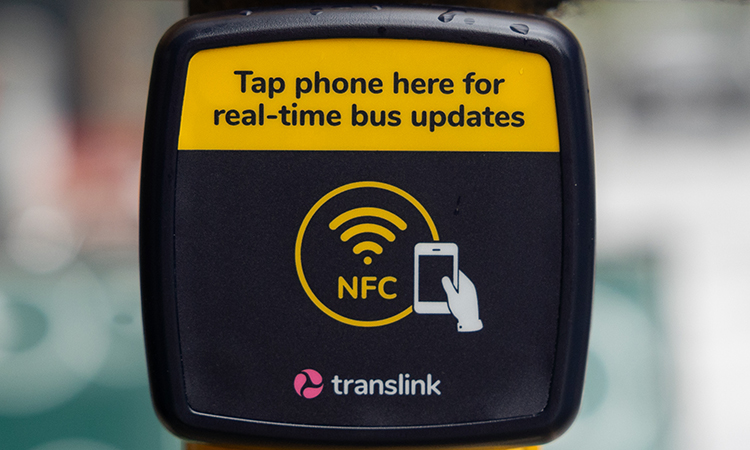Queensland travel made easier with on-the-spot access to bus information
- Like
- Digg
- Del
- Tumblr
- VKontakte
- Buffer
- Love This
- Odnoklassniki
- Meneame
- Blogger
- Amazon
- Yahoo Mail
- Gmail
- AOL
- Newsvine
- HackerNews
- Evernote
- MySpace
- Mail.ru
- Viadeo
- Line
- Comments
- Yummly
- SMS
- Viber
- Telegram
- Subscribe
- Skype
- Facebook Messenger
- Kakao
- LiveJournal
- Yammer
- Edgar
- Fintel
- Mix
- Instapaper
- Copy Link
Posted: 22 June 2023 | Dusty Miller - Translink | No comments yet
Dusty Miller, Director of Digital Solutions at Translink, discusses the successful implementation and benefits of the Near Field Communications (NFC) initiative, as well as how it has enabled seamless access to up-to-date travel information for Queensland bus users at every urban bus stop.


Credit: Department of Transport and Main Roads
Queensland bus users can now easily access up-to-date travel information with just a tap of their smartphone at every one of Queensland’s 15,500 urban bus stops. The Translink Division in the Department of Transport and Main Roads (TMR) has completed the roll-out of Near Field Communications (NFC) tags at urban bus stops across the state.
NFC uses a tag that has been installed at bus stops that allows customers to tap their smartphone device. This action promptly takes customers straight to a web page for that bus stop on the Translink website and provides stop, route, timetable, service disruption and real-time information.
NFC technology also assists people with visual impairment and people who do not speak English as their first language can translate the web page to their first language”
Furthermore, the NFC technology also assists people with visual impairment and people who do not speak English as their first language can translate the web page to their first language.
Customers only need to hold their phone in close proximity for a few seconds to scan an NFC tag. Patrons using iPhone devices need to hold the top rear of their phone to the NFC tag to scan, while customers using Android devices need to hold the back of the middle part of their phone to the NFC tag to scan.
The aim of the roll-out of this feature was to make it easier for anyone – whether they are a regular bus user or a tourist – to access information about services to help them get to where they need to go.
Overview of the project
Translink trialled NFC at selected bus stops and stations around the Brisbane Central Business District in August 2020 in order to trial the technology as part of a Proof of Concept (PoC).
We closely monitor technological innovations and consider whether these innovations could be leveraged to improve the public transport experience for Queensland residents. NFC immediately appealed to the public because of the obvious benefits it could deliver”
We closely monitor technological innovations and consider whether these innovations could be leveraged to improve the public transport experience for Queensland residents. NFC immediately appealed to the public because of the obvious benefits it could deliver for bus users.
The PoC trial ran for about three months with Translink actively engaging customers for feedback on the technology. Following positive customer feedback, the PoC trial was deemed a success and recommendation was made to progress to a project for the production solution. After the required budget allocation, we began the solution design and installation of an NFC tag at every urban bus stop across Queensland, in partnership with our suppliers.
Queensland covers one of the largest geographical areas of any single jurisdiction in the world, so it was a big job to install a tag at every urban bus stop in the state, from Coolangatta on the Gold Coast to Cairns in Far North Queensland (a distance of more than 1500km). The installation of the tags took approximately six months, with completion in early March 2023.
More than 540,000 scans have been recorded on an NFC tag since the start of the PoC trial, which shows that customers are enjoying the ease of being able to access stop and service information through a tap of their phone.


Credit: Department of Transport and Main Roads
The reasons why the project came into being
Translink sought opportunities to improve the customer experience at bus stops, which are different to other public transport locations, such as stations and interchanges.
Many of our urban bus stops are a pole with static printed timetable information, thus we sought opportunities to use technology to provide bus stop-specific information to our customers”
Many of our urban bus stops are a pole with static printed timetable information, thus we sought opportunities to use technology to provide bus stop-specific information to our customers.
The ability for a customer to hold their phone to the tag and immediately be able to access information about the bus stop and relevant services, without the need for a mobile app or searching for their stop, was an obvious opportunity to improve the experience for our customers at urban bus stops.
Our approach and the challenges that we faced
I am fortunate to lead Translink’s digital innovation programme, known as the Digital Futures Program, which provides us with an embedded and dedicated approach to investigation, experimentation and prototyping with new technologies and solutions, in close collaboration with stakeholders and customers.
In 2020, the Digital Futures Program team undertook a PoC of the NFC bus stop solution, to understand if it was suitable for a production deployment. During the period of time that the PoC was undertaken, our public transport patronage numbers were reduced and those customers who were travelling on our network were more hesitant to engage with our staff as a result of the COVID-19 pandemic.
Despite these challenges, the PoC was still a resounding success. We recorded over 1200 scans of the NFC tags during the three-month PoC period, and more than 86% of our surveyed customers said that they would consider using the solution regularly.


Credit: Department of Transport and Main Roads
Benefits of NFC over technologies such as GPS for bus stop information
As part of the Proof of Concept planning, our team evaluated other possible solution options and NFC stood out as the option that provided ease of use and reliability in all conditions.
Translink has provided QR codes on our printed timetables for many years now, and while many of our customers were exposed to and more experienced at using QR codes during the COVID-19 pandemic, our research and testing highlighted many environmental factors that inhibited the success of QR codes.
These environmental factors include rain or water, scratches, graffiti or damage on the timetable case and would result in a reduced ability for smartphone cameras being able to focus on and successfully read the QR codes.
In addition, we found GPS to be quite unreliable or inaccurate, particularly in areas of our bus network where there are many stops located near tall buildings, which creates an effect called GPS canyoning. This often results in the GPS location showing on a smartphone being quite a distance away from the real-world location, and there was a risk that our customers could end up viewing the wrong stop information as a result.
NFC technology overcame many of these issues, while proving to be very cost effective.


Related topics
Accessibility, Intelligent Transport Systems (ITS), Journey Planning, Mobility Services, Passenger Accessibility, Passenger Experience, Public Transport
Related modes
Bus & Coach
Related cities
Queensland
Related countries
Australia
Related organisations
Translink
Related people
Dusty Miller







